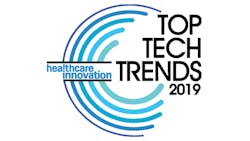New Software Platforms Spring Up to Support Multi-Sector Partnerships
Not everyone agrees that health systems should be focusing on social issues that lead to poor health, but there is no doubt that the move to value-based care has made “social determinants of health” the hottest phrase in the sector this year.
As the Center for Medicare and Medicaid Innovation (CMMI) and other payers begin to provide funding for housing, food and transportation assistance, pilot projects are springing up across the country to develop partnerships between social service agencies, hospital systems, public health agencies and federally qualified health centers. These multi-sector collaborations are finding that they need a new breed of software platform to bridge previously unconnected caregivers. These community information exchanges (CIEs) are taking many shapes and forms. For instance, in Southern California, 2-1-1 San Diego has built a CIE involving 53 network partners and is starting to use it to formalize referral pathways from physician practices. It includes a social risk assessment tool, provides alerts, and facilitates connections across multiple agencies and providers.
Mark Elson, executive director of the San Joaquin Community Health Information Exchange in California, notes that there is a role for regional HIEs to play. In both San Joaquin County and Santa Cruz, he says, the regional HIE is contracting with a care management software vendor and doing a level of data integration to create a curated clinical data set to populate the care management platform.
Elson’s Berkeley, Calif.-based consulting firm, Intrepid Ascent, also works with five other counties to implement IT systems to support data sharing for Whole Person Care, an ambitious effort within California’s Medicaid program that is working with counties to coordinate health, behavioral health and social services. Twenty-five counties are starting to share data and coordinate care for vulnerable Medi-Cal beneficiaries who have been identified as frequent users of multiple systems and who continue to have poor health outcomes.
“With Whole Person Care we are seeing a new technology category of care management vendors who offer shared care planning to track planned interventions. They offer tools that enable collaboration between members of a care team who may be in different organizations and in different sectors – healthcare and housing, for instance,” Elson says. “A complementary set of vendors has emerged that offer community resource databases with referral capabilities. They create electronic phonebooks of community-based organizations that healthcare systems increasingly want to refer patients to, ideally in a closed-loop manner.” But Elson says the industry is not yet seeing those care coordination offerings and the directory and referral pieces being offered in the same platform. “But that is definitely going to happen,” he adds. “They are going to converge. At a minimum, partnerships will be formed between them.”
Standing up a coordinated network
Determining what type of software platform to choose can be tricky. Intermountain Healthcare has been the driving force behind the Utah Alliance for the Determinants of Health, which is piloting a community partnership approach in Washington and Weaver counties to reduce inappropriate emergency department usage.
Gene Smith, community health director at Intermountain, says one goal was to be able to have an electronic process to connect providers, while being able to follow patients longitudinally. “We wanted to be able to do that on the social services side. We were looking for a vendor that had the capability to collect the proper consent from individuals to share their information with partners and to follow the referral from start to finish, to help us measure outcomes,” he says. “We looked at about a dozen vendors, and a number focused on creating a resource directory. That wasn’t what was important to us.”
Intermountain chose to work with a company called Unite Us, which also recently announced a major partnership with Kaiser Permanente. “The software is great and nice to have,” Smith says, “but the real value was building a coordinated network of providers where you could share information about an individual and have user roles and security protections in place to protect sensitive data such as behavioral health and domestic violence information. We started out thinking about data sharing and software-related things and quickly learned that was a commodity across the applications. We were looking for someone who knew how to stand up a coordinated network of partners. Where Unite Us was strong was in showing a demonstrated ability to help organizations create partner networks and having a solid consent-gathering process.”
One lesson in this process, Smith says, “is that while we have been focused on external partners, we realized that our internal partners, our care management teams, our medical assistants, our ED managers, clinic managers, are very much a part of the network and have work flows to design. We need to spend as much time with them as with our external partners.”
Building on HIE success in Trenton
The Trenton Health Team is a nonprofit multi-sector collaborative started by two hospital systems, an FQHC and the public health department in Trenton, N.J. It has grown to have 25 staff members and a $4 million annual budget to improve the health and well-being of the greater Trenton community. Its HIE, using the Care Evolution platform, went live in January 2014. The system is not just for document exchange, stresses Gregory Paulson, Trenton Health Team’s executive director. “It is designed to be a real-time population health platform. It offers a longitudinal view of every patient, but we do a lot of targeted surveillance across the population to alert a primary care practice when their patients are in the hospital or to look at diabetes performance. We do broad-level population analytics to let us understand disease prevalence and associated comorbidities and root causes. All of that is one engine.”
Since its inception, the Trenton Health Team has worked to address social determinants of health and create partnerships among healthcare and community organizations that impact social needs. “For us, how we use technology to better identify and address social needs was a logical next step in our health information technology work,” Paulson says. “When we decided to implement NowPow, we already had the social service partners at the table working with us. We were able to invite them to participate in the vendor selection process and lead deployment of the tool with us, including developing a standardized social determinant screening tool that social workers from across the spectrum all collaborated on and have shared ownership.”
Healthcare providers are gaining access to a rich database of resources in the area. “Before they may have had a binder with a few of the food pantries and homeless shelters,” says Mandy Nash, the HIE coordinator “This broadens where they can refer patients to. It also gives the social service agencies a way to see what else is available.”
Trenton Health Team has worked to integrate NowPow’s referral and tracking software into the HIE. “NowPow and CareEvolution were very clear about FHIR being the correct technical solution to use,” Nash says. “Within the HIE, we built out the NowPow API, so one part of a patient dashboard pulls real-time data directly from partner EHRs. You can navigate to different areas for clinical information, and now one of those areas is a NowPow tab that allows you to see the patient’s social determinants profile right next to the clinical information.”
Paulson stresses that the social determinant summary appears alongside all the other clinical results – a radiology report, lab values, a discharge summary. “It elevates social determinant assessment and treatment to be the same as clinical assessment and treatment, which is tremendous. The implementation went live just a few months ago and the social determinant screenings have just started. “We are excited to see how this takes off,” he says.
Besides California, other state governments are also working on social determinants. North Carolina has an ambitious project called NCCare360 to connect healthcare and human service providers across the state. The Oregon Health IT Commons board and staff are beginning to explore development of an Oregon Community Information Exchange (Oregon CIE) to connect the healthcare and social service sectors. Noting that there is no standard or scalable method to connect vulnerable at-risk populations with social needs to available social service resources, public documents on the state website say Oregon has identified several potential features, including a searchable, regularly-updated directory of community-based organizations and agencies providing services that can help address patients’ social needs as well as the ability to send referrals to community organizations and to track outcomes (i.e., close the loop).
Oregon also is interested in longitudinal needs and care tracking, the ability to define care goals and see referrals, services and activities and the capacity to analyze social needs screening and referral activities and outcomes.
From the social service agency perspective
What does all this activity look like from the social service agency side? One of the community-based organizations working with Medicaid accountable care organizations in Massachusetts is Community Servings, a not-for-profit food and nutrition program providing services to individuals and families living with critical and chronic illnesses. This year, it will provide 650,000 meals to 2,300 critically ill individuals and their families.
In three published studies, researchers found significant savings and reduced hospitalizations and emergency department visits with people using their services compared to a control group. Because of these studies, Community Servings was able to develop five contracts with payers and is now pursuing contracts through a new MassHealth ACO flexible service dollars program that will allow Medicaid ACOs to pay for some social services.
Speaking during a March 20 webinar, David Waters, Community Servings’ CEO, said, “If any of us develop diabetes, we could probably manage our diet and glucose, but if we had end-stage kidney disease or a stroke, none of us could do that. For patients in the Medicaid program, the system sort of sets you up to fail. Many people do not have stable housing and food. Providing a complex medical diet for them is often the smartest thing a health system can do for a high-utilizer patient. We manage their diet for them when they can’t do it on their own.”




